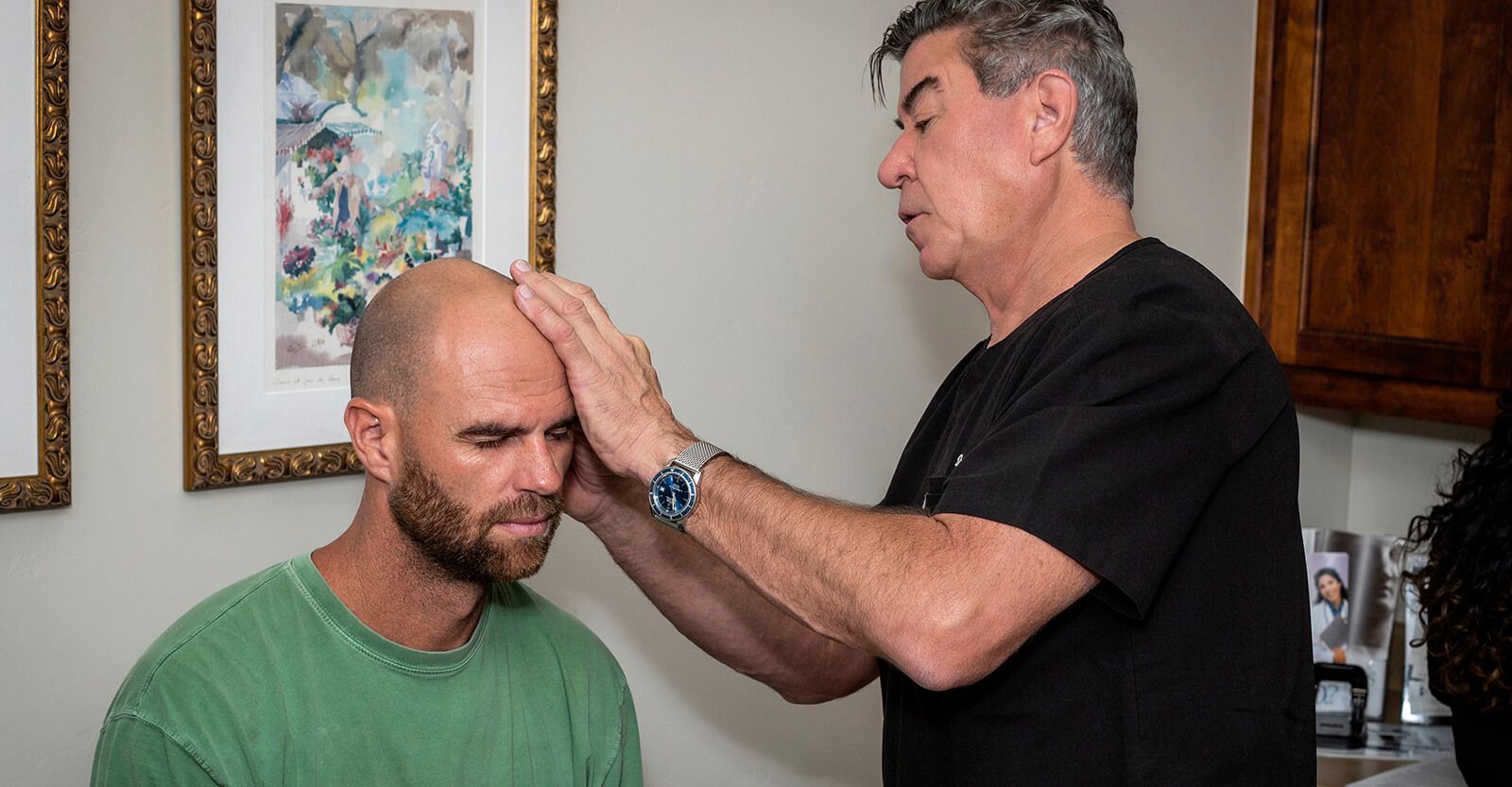Skin Cancer Detection & Removal
Skin cancer is the most common form of cancer in the United States. When skin cells suffer from irreparable DNA damage, it triggers cell mutations which can cause the cells to rapidly reproduce. This rapid cell reproduction can result in cancerous lesions and tumors.
The three most frequently occurring forms of skin cancer include basal cell carcinoma; squamous cell carcinoma, and melanoma.
Dr. Bradley Kurgis uses several different methods to treat and address skin cancer.
The most common treatments include:
Mohs Procedure
Mohs Micrographic Surgery is an advanced procedure that has the highest cure rate (98-99%) of any skin cancer treatment. During the procedure, the Mohs surgeon examines skin tissue microscopically to create a detailed map of which healthy cells and cancerous cells, while preserving as much healthy tissue as possible.
It relies on the accuracy of a microscope to trace and ensure removal of skin cancer down to its roots. This procedure allows the dermatologist, trained in Mohs Surgery, to see beyond the visible disease, and to precisely identify and remove the entire tumor, leaving healthy tissue unharmed. This procedure is most often used in treating two of the most common forms of skin cancer: basal cell carcinoma and squamous cell carcinoma.
Surgical Excision
Excision surgery is used to remove a variety of skin problems. This includes skin cancer, atypical nevi, and benign skin growths. This procedure removes some of the healthy skin tissue surrounding the area called the margin. Dr. Kurgis may recommend this procedure when the patient is experiencing aggressive types of skin cancer, such as melanoma.
Typically, the doctor will use a local anesthetic to numb the affected area and use an elliptical excision for the surgery. After removing the cancerous tissue and the margin, the surgeon closes the incision with stitches. In some cases involving a large incision, the doctor may recommend a skin graft or flap to repair the incision.
Curettage
Curettage is a minimally-invasive technique used to remove small cancerous or non-cancerous lesions. The lesion, or growth, is scraped off with a curette (a circular or oval-shaped instrument) and an electrocautery needle produces burning heat, which destroys any residual malignant cells and controls bleeding through cauterization. To minimize discomfort, the patient is given anesthesia before the procedure.
Cryosurgery
Cryosurgery is a treatment that uses liquid nitrogen to freeze and destroy skin cancer. This treatment uses a cotton-tipped applicator or spray device to administer the liquid nitrogen.
There is no cutting and rarely any bleeding or anesthesia involved with this procedure. In some cases, the procedure may need to be repeated several times within the same session to ensure the destruction of all malignant cells.
Acne
Acne can affect teenagers and adults alike. While not a life-threatening condition, acne can cause permanent scarring and negatively affect a person’s attractiveness and self-esteem.
Several treatments are available, which are tailored to your skin. They include the following:
- Antibiotics
- Isotretinoin Treatment (Accutane)
- Non-prescription acne lotion and/or cream
- Photodynamic blue light therapy
- Personalize Skin Care Regimen
If you’re interested in learning more about our services call us for an appointment at (805) 434-5563
Eczema/Psoriasis
This is a common skin condition that can affect all age groups. Eczema, also known as atopic dermatitis, is a condition known for causing dry, itchy red patches on the skin. In the more extreme cases of eczema, it can result in rough, dry patches covering large areas of the body, which can cause severe irritation and discomfort.
Eczema and psoriasis are not contagious. Currently, there is no cure, but with proper treatment, the inflammation and the appearance can be reduced.
Rosacea
The rosacea’s classic symptoms are patchy flushing (redness) and inflammation, particularly on the cheeks, nose, forehead, and around the mouth. As this skin condition progresses, small blood vessels and tiny, red bumps may appear on and around the reddened area.
Early diagnosis and treatment is very helpful for the successful management and alleviation of rosacea symptoms.. When left untreated, rosacea will get worse and may be more challenging to treat.
Treatments may include a combination of methods such as:
- Prescription gels and creams.
- Oral antibiotics.
- Cortisone creams.
- Laser treatments.
- Uncovering unique triggers.
- Lifestyle changes.
Other Common Skin Problems
We can evaluate and treat many common skin conditions including those listed below. Our treatments are individually tailored to your needs.
- Rashes
- Moles
- Nail Problems
- Warts
- Scars
- Excessive Dry Skin
- Skin Tags
Contact

1320 Las Tablas Rd
Templeton, CA 93465
Office: (805) 434-5563
Fax: (805) 434-5916
Hours
Monday 8am – 5pm
Tuesday 9am – 6pm
Wed-Th 8am – 5pm
Friday 8am – 3pm
Sat-Sun Closed


